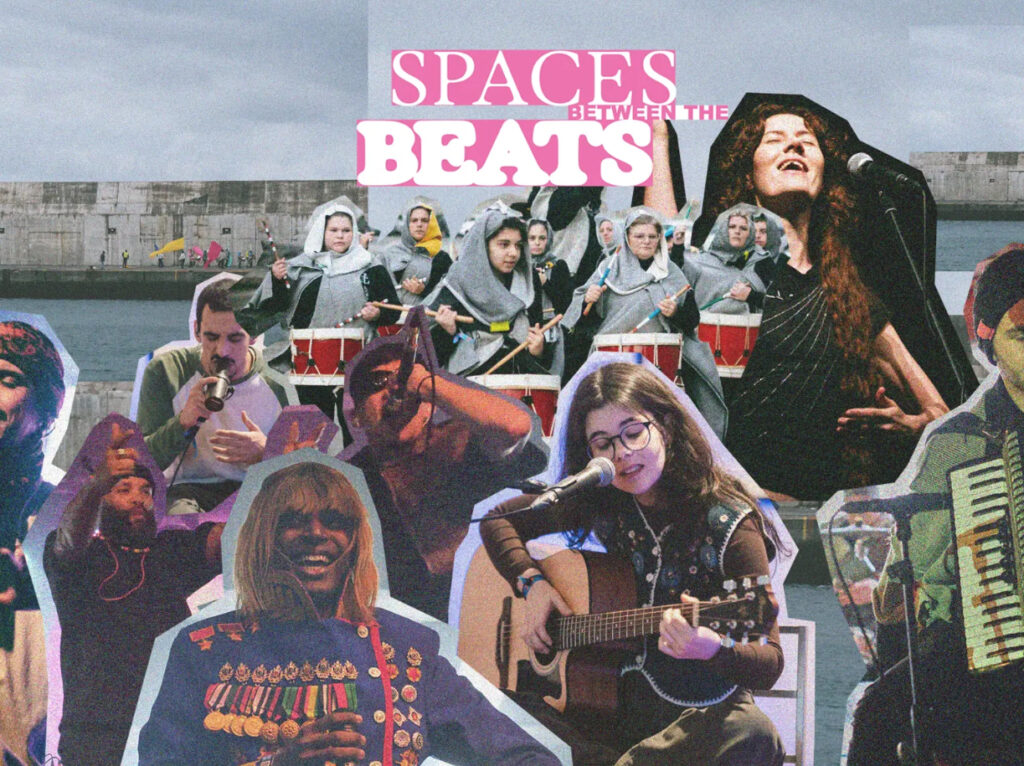
The Azores, nine volcanic islands adrift in the North Atlantic, have always been a place of in-betweens. Positioned 800 miles west of mainland Portugal, São Miguel and its sister islands are geographically distant, culturally peripheral, and climatically unpredictable. They’re sites of geological restlessness and climatic contradiction — emerald hillsides and basalt cliffs, crater lakes and subtropical cloud forests. Yet it’s precisely this position — suspended between continents, timescapes, and identities — that’s now producing one of Europe’s most exciting and unexpected sound movements.
This is not Lisbon. This is not Porto. This is not Fado. This is Azorean music, still raw, still becoming — and unfolding in the spaces between the beats.
FROM MARGIN TO MUSICAL EMERGENCE
For centuries, the Azores have existed in cultural isolation. With a population smaller than some Lisbon neighborhoods, and few infrastructural connections to mainland Europe, the islands have often lagged behind Portugal’s musical evolution. While Portugal flirted with electronic minimalism, hip-hop, and experimental jazz, the Azores remained musically conservative — rich in folkloric tradition, but cut off from the currents of innovation. But that’s changing.
The shift began quietly. In São Miguel, the archipelago’s largest and most populous island, a new generation of islanders has begun to reclaim their identity through sound. Blending environmental field recordings, post-rock sensibilities, modular synths, and minimal percussion, these musicians are not seeking to replicate Portugal’s trends. They are constructing a sound of and for the archipelago — rooted in absence, shaped by isolation, and carried by wind, wave, and fog.
On the northern coast, in a small fishing village where basalt jetties frame the Atlantic horizon, this ethos becomes manifest. Here, in an impromptu harbor-stage, fifty musicians dressed in hooded capes — an intentional nod to the islands’ cloaked past — take turns with drum kits, analog synthesizers, field mics, and stringed instruments. Their performance is communal, not competitive. It feels more like ritual than concert. The music breathes with space. No one element dominates. It’s an act of listening as much as playing — each performer waiting for the other to exhale.
The result? A collective pulse that refuses rhythm for rhythm’s sake. A slow bloom of textures. The sound of community negotiating silence.
ISLANDS AS INSTRUMENTS
What makes the Azorean scene distinct is its deep entanglement with geography. The islands are not merely backdrops — they are collaborators. Musicians incorporate the sputter of geothermal vents, the crash of coastal waves, and the high-pitched calls of endemic birds into their compositions. Some record live in the crater of Sete Cidades; others place contact mics on lava rock or capture the subterranean acoustics of abandoned whaling stations.
This environmental engagement gives Azorean music a site-specific quality rarely found elsewhere. It is neither urban nor pastoral. It is elemental — defined not by people but by pressure systems, tectonic memory, and tidal rhythm. Much like Iceland’s Björk or Hawaii’s Keola Beamer, Azorean musicians are drawing from the sonic imprint of the land. But unlike those examples, they are doing so without the benefit of global infrastructure or institutional support.
Indeed, the scene is entirely self-organized. Recording studios are home-built. Distribution is mostly digital. Performances are often impromptu — set in church ruins, abandoned farms, or thermal springs. This DIY ethic isn’t simply aesthetic. It’s logistical survival. There are no major labels operating in the Azores. No dedicated music venues. No arts funding councils pouring grants into the scene.
And yet — or perhaps because of that — the music feels uncommonly pure. It hasn’t been engineered for export. It hasn’t been optimized for streaming. It exists for itself and for the islands. A form of sonic sovereignty, quiet but insistent.
COMMUNITY THROUGH COLLECTIVE SOUND
Much of this movement coalesces around informal collectives rather than bands. One such group — Entre Ventos (“Between Winds”) — formed in 2021 after a group of young artists returned home from mainland universities during the pandemic. Disillusioned by urban life and inspired by the enforced stillness of lockdown, they began gathering weekly to explore sound as a communal process. What started as casual jams in a barn evolved into sprawling compositions that layer minimalist piano, bowed guitar, modular synths, and found sound into sweeping 20-minute sonic meditations.
Another notable collective is Chão de Lava, which began as a visual arts residency and morphed into a monthly listening series. Their events are unpublicized — spread by word of mouth — and often feature collaborations between local fishermen, ceramicists, and musicians. Their ethos is one of radical participation: no hierarchy, no setlists, no spectators.
And then there are the beatmakers. Inspired by labels like Erased Tapes and Stones Throw, young producers like Duarte Rocha and Sofia Caldeira are crafting lo-fi ambient records in their bedrooms, often incorporating snippets of Azorean speech, shortwave radio static, and ship horns into their tracks. Their beats float between glitch and drone, refusing easy genre categorization. It’s music for thinking, walking, fog-drifting.
A NEW PORTUGUESE PERIPHERY
The rise of the Azorean sound movement has broader cultural implications. It signals a re-decentralization of Portuguese creativity. For too long, Lisbon has dominated the country’s musical narrative. From Batida to Fado revival, the capital has monopolized media attention, funding, and cultural export. But the Azores are reminding us that isolation breeds innovation — that remoteness is not a hindrance but a crucible for new forms.
Critics might ask whether this scene is sustainable — whether it can grow beyond its islands. But that’s the wrong question. The point isn’t expansion. It’s intensification. The Azorean movement doesn’t need to “blow up.” It needs to continue unfolding, slowly, authentically, on its own terms. Its value lies in its refusal to conform — in its commitment to the slow art of listening, waiting, and responding.
That said, small signals of recognition are emerging. Lisbon-based label Colectivo Sonoro recently released a compilation of Azorean ambient tracks. A handful of São Miguel artists were featured in the 2024 Boom Festival soundscape program. And word is spreading through alternative press and niche music communities. People are beginning to listen.
And rightly so. Because in a global industry addicted to spectacle, the Azorean scene offers an antidote: a sonic ecology where silence matters, where every beat has room to breathe, where music is less about assertion and more about presence.
Impression
To experience the Azores is to step into a place that resists linear time. Mist hangs in the air like an unresolved chord. Cows graze beside satellite dishes. Volcanoes sleep beneath quiet soil. It’s no surprise, then, that its music is similarly paradoxical — at once ancient and emergent, minimal yet lush, rooted yet futuristic.
What is happening here is not just a trend. It is a cultural realignment, a gentle revolution in how we think about periphery, place, and power. The Azorean musicians are not trying to be heard over the noise. They are inviting us to enter the quiet — to find beauty in patience, meaning in pause, identity in the space between the beats.
And if we listen carefully, the islands begin to sing.
No comments yet.









